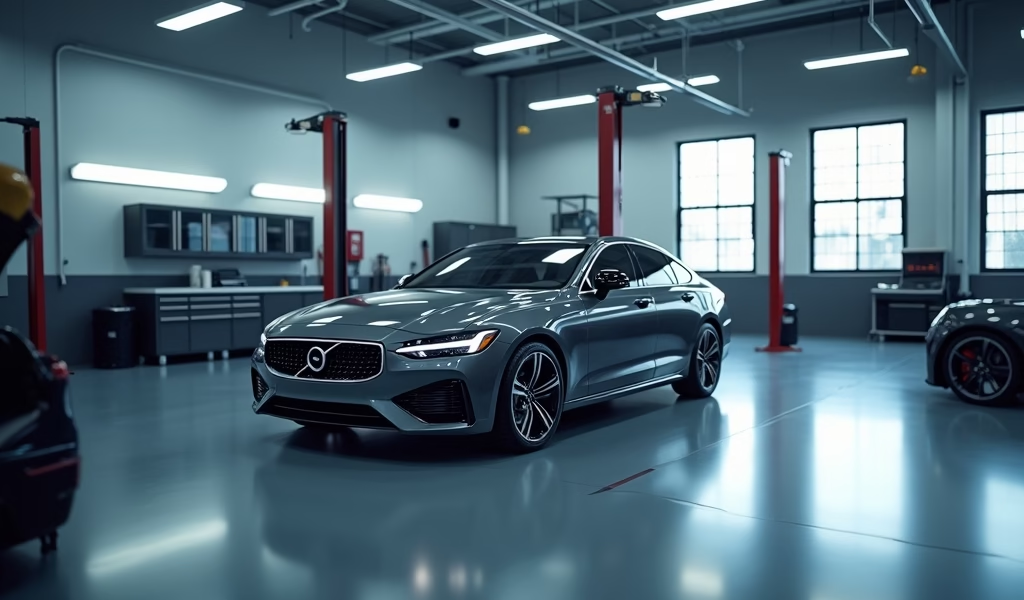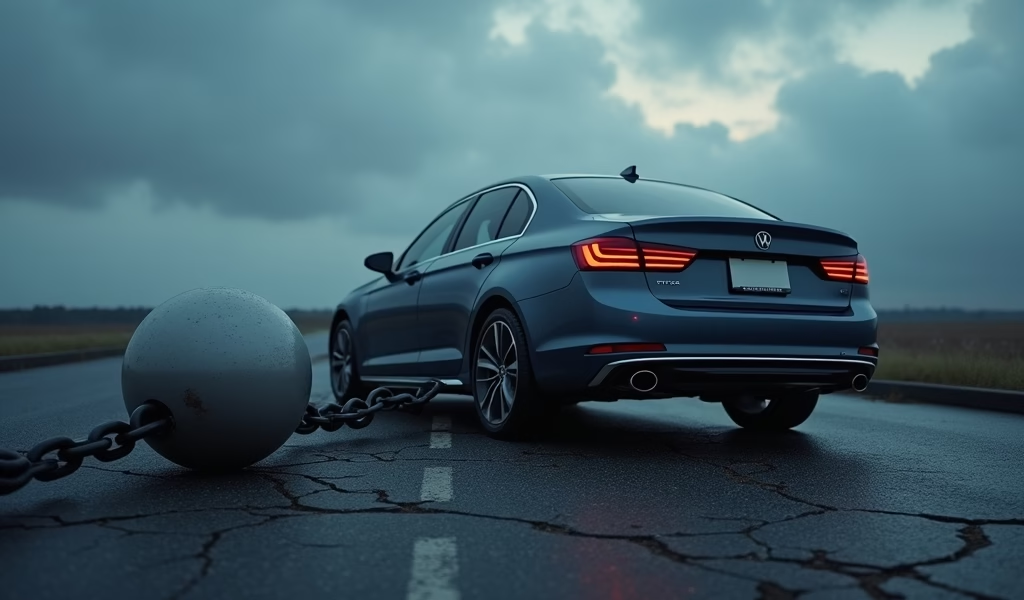Overview
This article explains that a good car loan APR typically ranges from 3-6% for new cars and 4-7% for used cars with good credit, while outlining five key factors affecting your rate: credit score, loan term, vehicle type, down payment, and economic conditions. It provides practical strategies to secure better rates, including checking your credit before shopping, getting pre-approved, utilizing relationship discounts, timing your purchase strategically, and negotiating APRs with dealers.
Table of Contents
- Understanding APR: What It Means for Your Car Loan
- What’s Considered a Good APR in Today’s Market?
- 5 Factors Affecting Your Car Loan APR
- 5 Quick Tips to Secure a Lower APR on Your Next Car
- APR Negotiation Strategies That Actually Work
- APR vs. Interest Rate: Understanding the Crucial Difference
- Conclusion
- Frequently Asked Questions
Understanding APR: What It Means for Your Car Loan
When you’re shopping for a car, figuring out what’s a good APR for a car can feel like deciphering a foreign language. As someone who’s spent decades in the automotive financing world, I can tell you that Annual Percentage Rate (APR) is simply the yearly cost of borrowing money, expressed as a percentage. But there’s nothing simple about how much it impacts your wallet over the life of your loan.
Think of APR as the true cost of your loan – it includes not just the interest rate but also fees and other charges you’ll pay to the lender. When I’m helping folks at the shop understand their financing options, I often explain that even a 1% difference in APR can mean thousands of dollars over a typical 60-month loan term.
The APR serves as your financial compass when navigating car loans. Unlike the sticker price that everyone negotiates, many buyers accept the first APR offered without realizing it’s just as negotiable. Your APR directly affects your monthly payment and the total amount you’ll pay for your vehicle over time.
To put it in perspective, on a $30,000 loan with a 60-month term, the difference between a 3.5% APR and a 6.5% APR is about $50 per month – that’s $3,000 over the life of the loan! That’s enough to cover several years of maintenance or a nice set of premium tires for your new ride.
What’s Considered a Good APR in Today’s Market?
So, what’s a good APR for a car in today’s financial landscape? In my 25 years helping people finance vehicles, I’ve seen rates swing dramatically. As of 2023, a “good” APR typically falls between 3% and 6% for new cars if you have strong credit, while used car rates generally run 1-2 percentage points higher.
Market conditions constantly fluctuate, however. When the Federal Reserve adjusts its benchmark interest rate, auto loan rates typically follow suit within a few weeks. That’s why timing your purchase can sometimes save you significant money.
Here’s what I generally consider good APRs based on credit profiles:
- Excellent credit (720+): 3-4.5% for new cars, 4-5.5% for used
- Good credit (690-719): 4.5-6% for new cars, 5.5-7.5% for used
- Average credit (660-689): 6-9% for new cars, 7.5-10.5% for used
- Below-average credit (620-659): 9-12% for new cars, 10.5-15% for used
- Poor credit (below 620): 12%+ for new cars, 15%+ for used
Remember, these ranges are guideposts, not guarantees. I’ve seen customers with excellent credit get offered 7% APRs at dealerships, only to secure 3.5% through credit unions offering the lowest car loan rates. Never accept the first offer without shopping around.
The current auto financing environment has been particularly volatile due to economic factors and inventory challenges. According to Experian’s State of the Automotive Finance Market, average APRs have increased significantly in recent quarters, making it even more critical to understand what constitutes a fair rate.

5 Factors Affecting Your Car Loan APR
When determining what’s a good APR for a car, you need to understand the factors that influence the rate you’ll be offered. Having guided countless customers through the financing process, I can tell you these five elements have the most significant impact:
1. Credit Score and History
Your credit score is the single most influential factor in determining your APR. Lenders view it as a snapshot of your financial reliability. A score above 720 will typically qualify you for the best rates, while anything below 620 may result in double-digit APRs.
What many folks don’t realize is that lenders also look at the depth of your credit history. Someone with a 700 score but 15 years of credit history might get a better rate than someone with a 720 score but only two years of history. They’re looking for a proven track record of managing debt responsibly over time.
2. Loan Term
The length of your loan significantly impacts your APR. Generally, shorter terms (36-48 months) qualify for lower rates than longer terms (72-84 months). Why? Because the longer the lender’s money is out in the world, the greater their risk.
I’ve seen customers fixate on getting the lowest monthly payment by stretching to an 84-month loan, only to end up with an APR that’s 2% higher than what they could have gotten with a 60-month term. That choice can cost thousands over the life of the loan.
3. New vs. Used Vehicle
New cars typically qualify for lower APRs than used vehicles. This isn’t because lenders prefer shiny new things – it’s about risk assessment. New cars have predictable depreciation curves and known histories, making them less risky collateral.
That said, some newer used cars (1-3 years old) with low mileage can sometimes qualify for “new car” rates, especially when purchased from certified pre-owned programs. These can be sweet spots for value-conscious buyers looking for good APRs.
4. Down Payment Amount
Your down payment affects your loan-to-value ratio (LTV), which lenders scrutinize carefully. A larger down payment means you’re financing less of the vehicle’s value, reducing the lender’s risk if you default.
I’ve seen customers knock 0.5-1% off their APR simply by increasing their down payment from 10% to 20% of the vehicle’s price. That’s because crossing certain LTV thresholds can qualify you for better rate tiers with many lenders.
5. Economic Conditions
Broader economic factors, particularly the Federal Reserve’s monetary policy, create the foundation for all lending rates. When the Fed raises rates to combat inflation, car loan APRs typically rise across the board.
Market competition also plays a role. During slow sales periods, manufacturers may subsidize especially low APRs or even 0% APR promotions on certain cars to stimulate sales. These promotional rates can be exceptional deals if you qualify and the vehicle meets your needs.
5 Quick Tips to Secure a Lower APR on Your Next Car
After helping thousands of customers finance vehicles, I’ve developed these five battle-tested strategies to secure what’s truly a good APR for a car:
Tip 1: Check and Boost Your Credit Score Before Shopping
Pull your credit reports from all three bureaus at least three months before you plan to buy. This gives you time to correct errors and address issues that might be dragging down your score. Even a 20-point improvement can sometimes drop you into a better rate tier.
Quick credit-boosting tactics include paying down credit card balances to below 30% of your limits, avoiding new credit applications in the months before car shopping, and making sure all existing payments are on time. For clients planning major purchases, I often recommend temporarily putting extra cash toward reducing credit card balances rather than increasing the down payment, as the credit score improvement can sometimes yield greater savings.
Tip 2: Shop Your Rate Before Shopping for a Car
Get pre-approved for financing before you ever set foot on a dealer’s lot. Contact your bank, local credit unions, and online lenders to see what rates you qualify for. Having these offers in hand gives you leverage when negotiating at the dealership and prevents you from being vulnerable to whatever financing terms they present.
A little-known trick: all credit inquiries for auto loans within a 14-day period count as a single inquiry on your credit report. So don’t be afraid to shop around extensively – the impact on your credit score is the same whether you get one pre-approval or five.
Tip 3: Consider Relationship Discounts
Many banks and credit unions offer APR discounts for existing customers, especially those with checking accounts or other loans. These relationship discounts typically range from 0.25% to 0.50% off the standard rate.
Similarly, some manufacturers’ captive finance companies (like Honda Financial or Toyota Financial) offer loyalty discounts if you’re currently financing with them. Don’t forget to ask about these opportunities – they’re rarely advertised prominently but can be significant savings.
Tip 4: Time Your Purchase Strategically
The end of the month, quarter, or year often brings special financing incentives as dealers and manufacturers push to meet sales targets. Holiday weekends are also prime times for promotional rates.
For the absolute best combination of price and financing, late December can be magical. I’ve seen customers qualify for rates 1-2% below the normal market simply because of the calendar date and a dealer’s need to hit annual goals.
Tip 5: Be Willing to Negotiate the APR
Many buyers don’t realize that the APR offered by a dealership isn’t set in stone – it often includes a markup that generates profit for the dealer. If you’ve done your homework and have competitive pre-approvals, you can ask the dealer to match or beat your best rate.
A phrase I teach my customers: “I’m happy with the vehicle and price, but the financing needs work. I’ve been pre-approved at X% elsewhere – can you beat it?” This approach maintains goodwill while making it clear you’re informed and have options. According to Consumer Financial Protection Bureau research, negotiating your APR can save you significant money over the life of your loan.

APR vs. Interest Rate: Understanding the Crucial Difference
When discussing what’s a good APR for a car, it’s vital to understand how APR differs from a simple interest rate. This confusion costs car buyers thousands, and I’ve spent countless hours explaining this distinction to customers.
The interest rate represents just the cost of borrowing the principal amount. It’s the percentage of the loan amount that the lender charges you annually for the privilege of using their money. Simple enough, right?
APR, however, encompasses the interest rate plus any additional fees and charges rolled into the loan. This might include loan origination fees, processing charges, and sometimes even certain insurance products. That’s why the APR is almost always higher than the stated interest rate.
Here’s where it gets tricky: two loans with identical interest rates can have different APRs. For example, if Lender A offers a 4% interest rate with $500 in fees, while Lender B offers a 4% rate with $1,500 in fees, Lender B’s APR will be noticeably higher when those fees are incorporated.
This distinction becomes especially important when comparing financing offers from different sources. Dealers might advertise a competitive interest rate but load the loan with fees that drive up the APR. That’s why federal law requires lenders to disclose the APR – it provides a more complete picture of what you’re really paying.
When evaluating what is a good interest rate for a car, always ask for the APR specifically, and request a breakdown of all fees included. This transparency allows you to make truly informed comparisons between offers.
Conclusion
Understanding what’s a good APR for a car empowers you to make financially sound decisions that could save you thousands over the life of your loan. Remember that “good” is relative to your specific financial situation, the current market, and the type of vehicle you’re purchasing.
In today’s market, striving for an APR between 3-6% for new vehicles and 4-7% for used vehicles (with good to excellent credit) gives you a solid target. However, don’t get discouraged if your circumstances don’t allow you to reach these ranges immediately. Even if you need to accept a higher rate now, many loans can be refinanced later when your financial picture improves.
The most important takeaway is to be proactive and informed. Check your credit, shop around for rates, understand the factors that affect your APR, and be willing to negotiate. The time invested in securing even a 1% lower APR can yield returns that far exceed most other financial decisions you’ll make.
Whether you’re buying your first car or your fifteenth, approaching the financing process with knowledge and confidence puts you in the driver’s seat – right where you belong.
Frequently Asked Questions
Is 7% APR good for a car loan?
A 7% APR is considered average to good for used cars and fair for new cars in the current market. It largely depends on your credit score, loan term, and whether rates are generally rising or falling.
Can I get a car loan with 0% APR?
Yes, 0% APR offers are available through manufacturer promotions, but typically only for new cars and buyers with excellent credit scores (usually 720+). These promotions are often seasonal and may require shorter loan terms.
What’s more important: lower APR or lower car price?
Both matter significantly, but a lower APR often saves more over the loan term for most buyers. On longer loans especially, even a 1-2% APR difference can outweigh a $1,000 discount on the purchase price.
Should I accept dealer financing or use my own bank?
Compare both options carefully, as neither is inherently better. Dealers sometimes have access to special manufacturer-subsidized rates, but banks and credit unions often offer more competitive standard rates.
How much can refinancing my car loan improve my APR?
Refinancing typically provides 1-3% APR improvement if your credit score has increased significantly or market rates have dropped. The best candidates for refinancing are those who initially financed at higher rates due to credit issues that have since improved.

